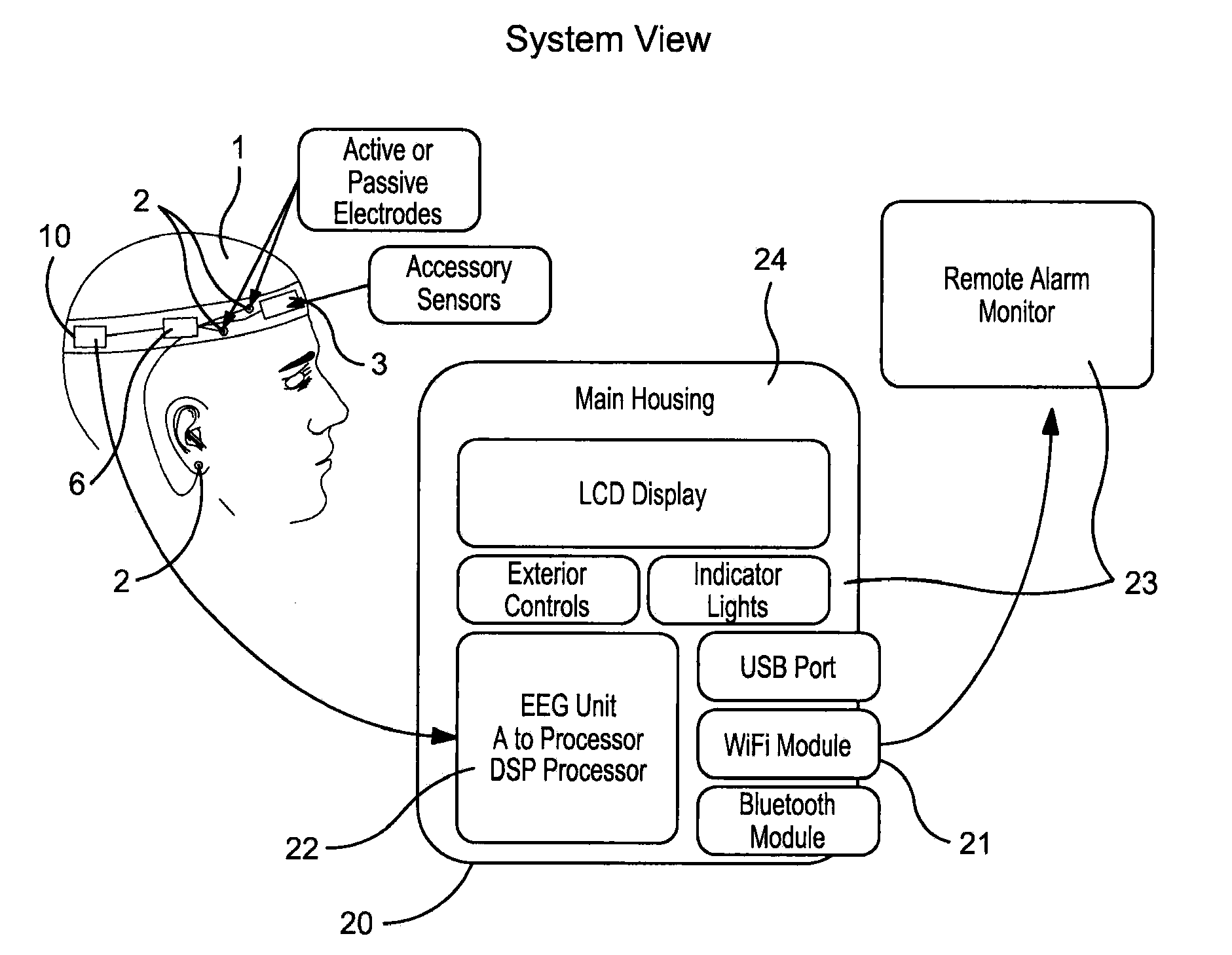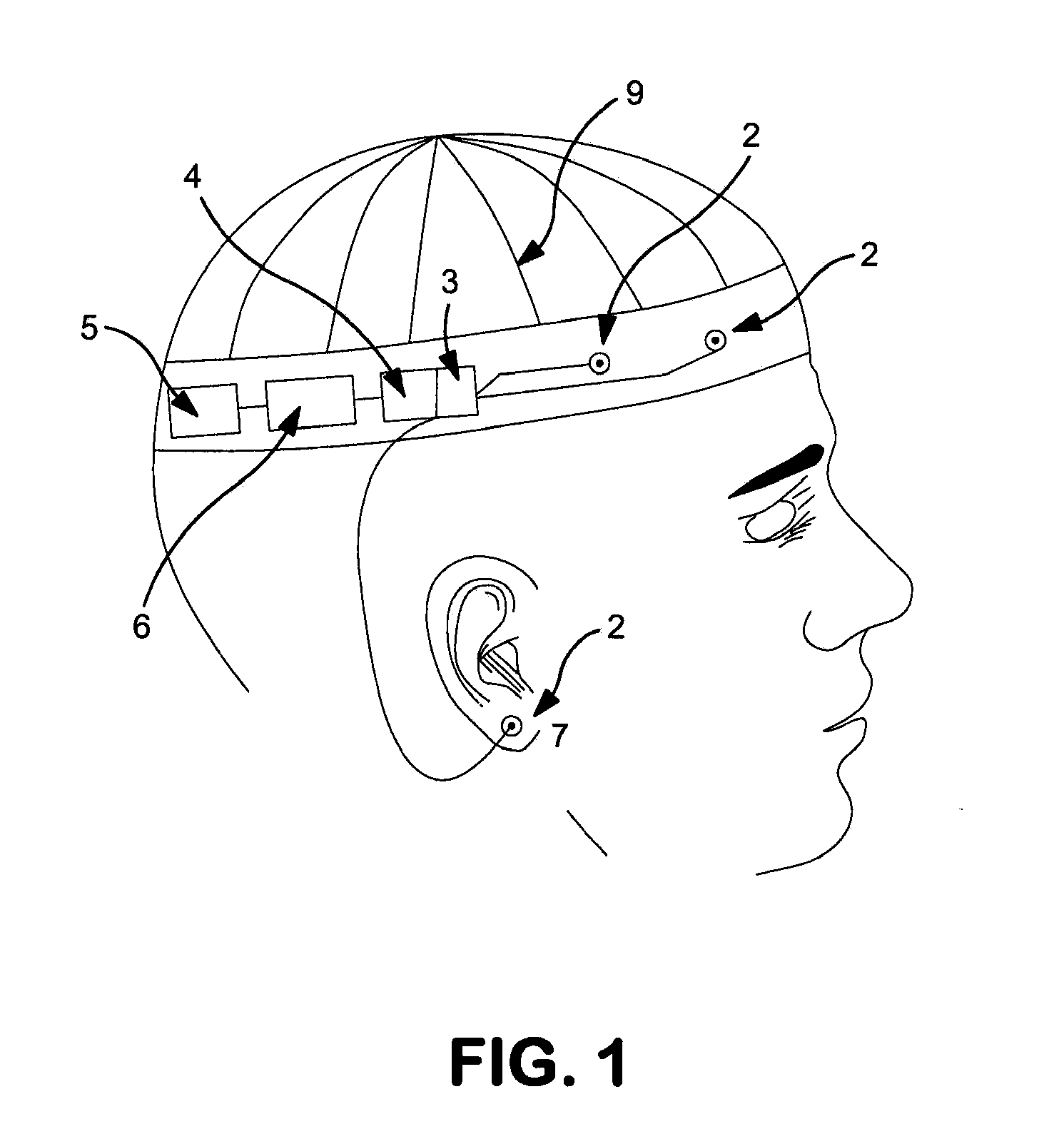Remote continuous seizure monitor and alarm
a continuous seizure and monitor technology, applied in the field of electroencephalography based seizure/epileptiform activity detection, recording and alarm, can solve the problem of limited comfort of electronic devices, and achieve the effect of increasing the accuracy of seizure detection and being easy to interpr
- Summary
- Abstract
- Description
- Claims
- Application Information
AI Technical Summary
Benefits of technology
Problems solved by technology
Method used
Image
Examples
Embodiment Construction
[0033]Electroencephalogram (EEG) waveforms contain information that can be used in the detection of seizure events. An EEG signal can be examined in a temporal context, in which the amplitude is measured against time or the spectral context, where the signal is examined as power measured against frequency. Most cerebral signals recorded are typically between 0.5 Hz and 100 Hz, but EEG devices record a much larger range between 0.5 and 200 Hz. When digitized, characteristics of neurological signals can be processed by learning algorithms, statistical methods or digital signal analysis to ascertain when a seizure occurs, for how long it occurs and in which frequency range it occurs. Before any determination can be made about the presence of seizures, digital filters are used to generate distinct features of an EEG waveform that are unique to the subject being observed.
[0034]The invention provides a simplified electroencephalogram (EEG) system that uses a smaller number of passive or a...
PUM
 Login to View More
Login to View More Abstract
Description
Claims
Application Information
 Login to View More
Login to View More - R&D
- Intellectual Property
- Life Sciences
- Materials
- Tech Scout
- Unparalleled Data Quality
- Higher Quality Content
- 60% Fewer Hallucinations
Browse by: Latest US Patents, China's latest patents, Technical Efficacy Thesaurus, Application Domain, Technology Topic, Popular Technical Reports.
© 2025 PatSnap. All rights reserved.Legal|Privacy policy|Modern Slavery Act Transparency Statement|Sitemap|About US| Contact US: help@patsnap.com



